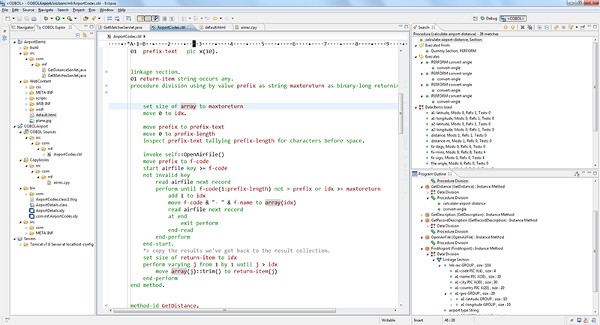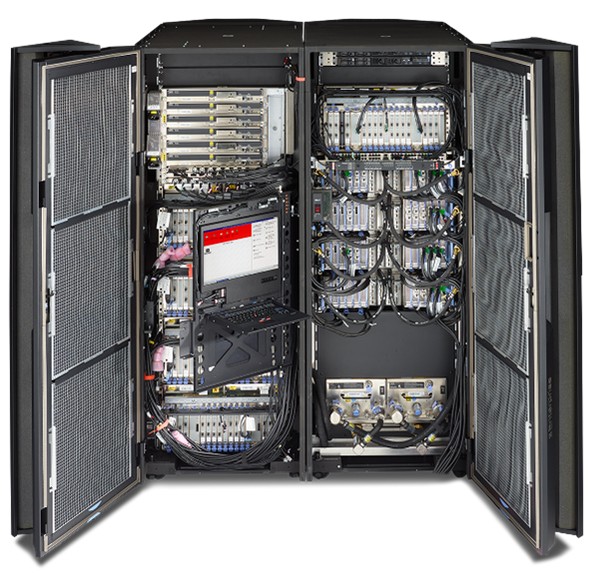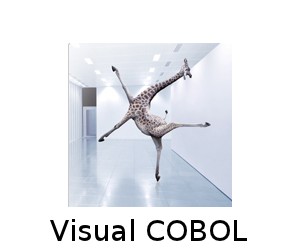Developed during 1959 the COBOL programming language was unleashed on the world on 3 January 1960 – the Common Business Oriented Language. It quickly became the de facto standard for businesses around the world ‘computerising’ their business processes, typically on mainframes, in line with the original objective of the development. In the intervening years the PC revolution has taken place, the trendy focus has moved to the internet and web based services and latterly mobility solutions, cloud services and social media. However after more than 50 years COBOL applications are still running in the majority of major organisations, continuing to do their job, supported by teams of maintenance programmers and developers.
The initial 1959 development work – by the Conference on Data Systems Languages (Codasyl) - was carried out under the patronage of the US Department of Defence and aimed to tackle the issues of running programs on different hardware with minimal code changes (the original write once and run anywhere technology) and reducing the cost of program production and maintenance.

The ANSI/ISO standard for COBOL was released in 1968 and has been updated and enhanced since in 1974, 1987, 2002 and most recently in 2014. Developers of compilers for COBOL, notably IBM and Micro Focus adhere to this standard and continually enhance their products. This is because the drivers are still there for COBOL development and maintenance.
Micro Focus summarised the COBOL state of play in a 2013 press release (http://www.microfocus.com/about/press/pressreleases/2013/pr070320131001.aspx) as shown in the table below, with information drawn from some of the most prestigious industry analysts and COBOL authorities:
| COBOL supports 90% of Fortune 500 business systems every day |
| 70% of all critical business logic and data is written in COBOL |
| COBOL connects 500 million mobile phone users every day |
| COBOL applications manage the care of 60 million patients every day |
| COBOL powers 85% of all daily business transactions processed |
| COBOL applications move 72,000 shipping containers every day and process 85% of port transactions |
| 95% of all ATM transactions use COBOL |
| COBOL powers 80% of all point-of-sale transactions |
| $2 trillion worth of mainframe applications in corporations are written in COBOL |
| 5 billion lines of new COBOL code are developed every year |
| The total investment in COBOL technologies, staff and hardware is estimated at $5 trillion |
These statistics maybe overstate the current position and there may be a movement away from the use of COBOL in new developments, but the sheer size of the installed base means that software maintenance will remain a reality for many years to come, and some companies, notably Micro Focus, are showing the way on how to modernise and extend applications without the need for rip-and replace.
In fact the recently published 2015 financial results for Micro Focus show that the COBOL business is worth over $221M and Mainframe Solutions a further $77M in the last 12 months.
Visual COBOL
Visual COBOL is Micro Focus’ leading solution for COBOL application development on Windows, Unix and Linux platforms. Integrating with either Eclipse or Visual Studio IDEs customers achieve flexibility of deployment across those platforms either in a Java Virtual Machine (JVM) or via .NET.
For example with Visual COBOL, applications can be compiled to Java byte code and deployed directly within the JVM. This in turn means that COBOL applications can now provide back end functionality for web services and applications.

The latest release (2.2.2) provides support for the leading Java application servers including:
- IBM Websphere
- Oracle Weblogic
- JBOSS and
- Tomcat
To make building COBOL web applications even easier Visual COBOL ships with the Eclipse Web Tools Platform (WTP) as standard. WTP extends Eclipse with tools for developing Web and Java EE applications. Visual COBOL also provides the hooks for COBOL applications to connect with databases via JDBC connections, so providing great facilities for modernizing and enhancing existing applications.
Mainframe COBOL - Legacy and Skills Gap?
The overwhelming majority of COBOL systems are mainframe-based, particularly the IBM mainframe – another unfairly maligned and reliable piece of tech. The continued relevance of Big Iron, and its latest incarnation after 50 years in the new z13 environment is no surprise to the Micro Focus team.
Today’s mainframe is very different to the mainframe that launched 51 years ago –less power consumed, less environmental impact and less total cost of ownership to name a few massive benefits, as IBM continues to invest and innovate to support the growing needs of today’s economy. It’s designed for the mobile economy. z13 is the first system able to process 2.5 billion transactions a day and the first system to make practical real-time encryption of all mobile transactions at any scale.

With proper investment, older mainframes running COBOL applications run just fine. The UK’s Department of Work and Pensions make 2.5m benefit payments every single day without a problem! The term “legacy” is overused in IT circles and certainly doesn’t really apply to the mainframe COBOL market even if it has ancestry of over 50 years and Micro Focus Enterprise Developer is a contemporary COBOL toolset for z13 application developers.
Much is made of the so-called skills gap – and the fact that many COBOL programmers are today’s silver-surfers. However, core COBOL applications continue to power the commercial world, so there is continued demand for COBOL skills in the market-place. One solution here is to of get COBOL taught more widely in academia – hence the Micro-Focus Academic Program which puts the business language back on the syllabus at universities.
What perhaps is more off-putting for new entrants to the COBOL environment is that many jobs are for code maintenance and not new projects. However as many core COBOL systems require integration with other technologies, COBOL skills alongside other contemporary tools are highly desirable in the job market.
In addition, while COBOL is traditionally perceived as a verbose language (5 lines of COBOL equivalent to 1 line of Java is a typical ratio for older COBOL standards), it not only uses resources efficiently (remember that in its early days memory and processing power was at a premium), but nowadays it is concisely constructed and uses the same, modern development environments (IDEs). So it is a perfect, unified training environment for a career in software development.
With thanks to Derek Britton, Director of Solutions Marketing at Micro Focus for his help in writing this short article. Follow his blog at blog.microfocus.com. For further information on Micro Focus COBOL solutions please go to www.microfocus.com/solutions. - OHM Ed.

